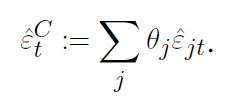1. Jared Bernstein, Ernie Tedeschi, and Sarah Robinson, "Housing Prices and Inflation," White House Council of Economic Advisers, September 9, 2021.
2. Scott Lincicome, "How U.S. Trade Policy Helped Construction Materials Costs Go Through the Roof," Cato at Liberty (blog), Cato Institute, March 18, 2021.
3. Marcy Nicholson, "U.S. Homebuilders Ask Congress to Lift Tariffs on Lumber, Metals," Bloomberg, October 20, 2021.
4. Alessandro Barattieri and Matteo Cacciatore, "Self-Harming Trade Policy? Protectionism and Production Networks," National Bureau of Economic Research Working Paper no. 27630, July 2020.
5. As of January 2022, the World Trade Organization reported that 2,201 of 2,804 (78.5 percent) trade remedy actions notified to the organization were antidumping measures. See "Trade Measures," Trade Monitoring Database, World Trade Organization, https://tmdb.wto.org/en.
6. "Temporary Trade Barriers Database," World Bank, March 2, 2021, https://www.worldbank.org/en/data/interactive/2021/03/02/temporary-trade-barriers-database.
7. U.S. Bureau of Labor Statistics, "Producer Price Index by Commodity: Special Indexes: Construction Materials," Federal Reserve Economic Data, Federal Reserve Bank of St. Louis, updated January 13, 2022, https://fred.stlouisfed.org/series/WPUSI012011.
8. U.S. Bureau of Labor Statistics, "Producer Price Index by Commodity: Inputs to Industries: Net Inputs to Residential Construction, Goods," Federal Reserve Economic Data, Federal Reserve Bank of St. Louis, updated January 13, 2022, https://fred.stlouisfed.org/series/WPUIP2311001.
9. Nicole Friedman, "Supply-Chain Issues Leave New Homes without Garage Doors and Gutters," Wall Street Journal, January 9, 2022. "Many builders so far have been able to pass increased material costs along to home buyers."
10. Edward Glaeser and Joseph Gyourko, "The Economic Implications of Housing Supply," Journal of Economic Perspectives 32, no. 1 (Winter 2018): 3–30.
11. Let  be a dummy variable equal to one if imports of product j from country k in industry i are subject to a new investigation at time t. We construct the following sectoral share of imports subject to new investigations in a given month:
be a dummy variable equal to one if imports of product j from country k in industry i are subject to a new investigation at time t. We construct the following sectoral share of imports subject to new investigations in a given month:

where ωijk is the previous-year, bilateral, sector-i import share for product j from country k.
12. Barattieri and Cacciatore, "Self-Harming Trade Policy?"; and Òscar Jordà, "Estimation and Inference of Impulse Responses by Local Projections," American Economic Review 95, no. 1 (March 2005): 161–182.
13. U.S. Bureau of Labor Statistics, "Producer Price Index by Commodity: Special Indexes: Construction Materials."
14. We estimate a fractional response model since the trade policy measure it is bounded between zero and one.
15. See Barattieri and Cacciatore, "Self-Harming Trade Policy?" for details about the mapping of  into a uniform tariff equivalent.
into a uniform tariff equivalent.
16. See Barattieri and Cacciatore, "Self-Harming Trade Policy?" for additional details, including the construction of the market-to-book ratio; and U.S. Bureau of Labor Statistics, "Producer Price Index by Commodity: Inputs to Industries: Net Inputs to Residential Construction, Goods."
 .
.




 be a dummy variable equal to one if imports of product j from country k in industry i are subject to a new investigation at time t. We construct the following sectoral share of imports subject to new investigations in a given month:
be a dummy variable equal to one if imports of product j from country k in industry i are subject to a new investigation at time t. We construct the following sectoral share of imports subject to new investigations in a given month:
